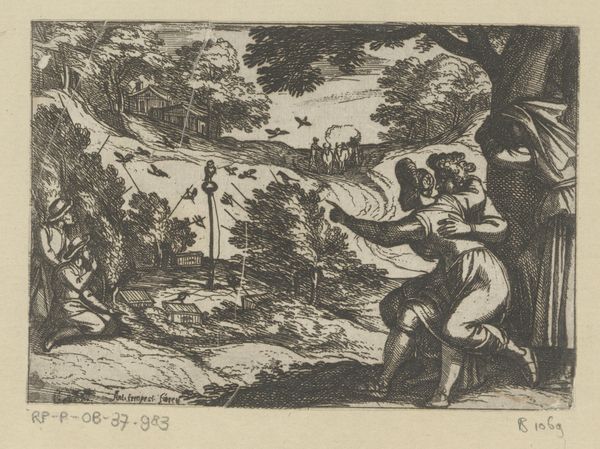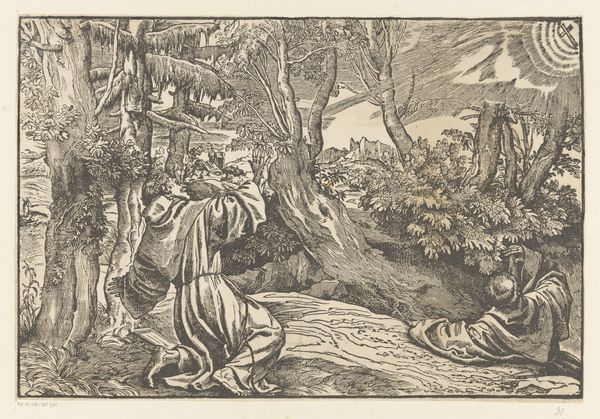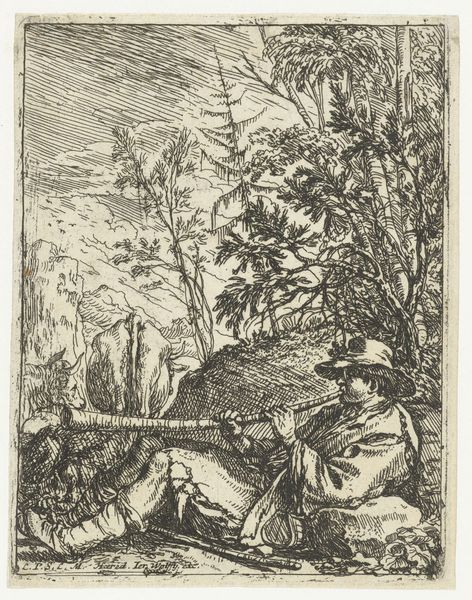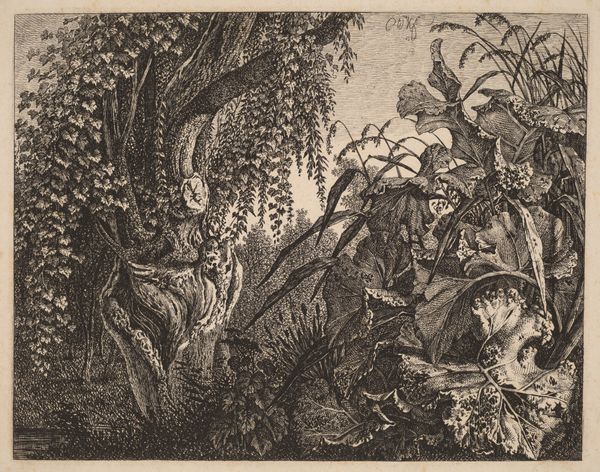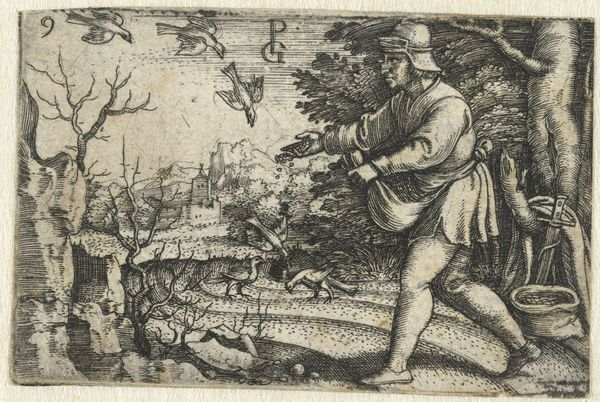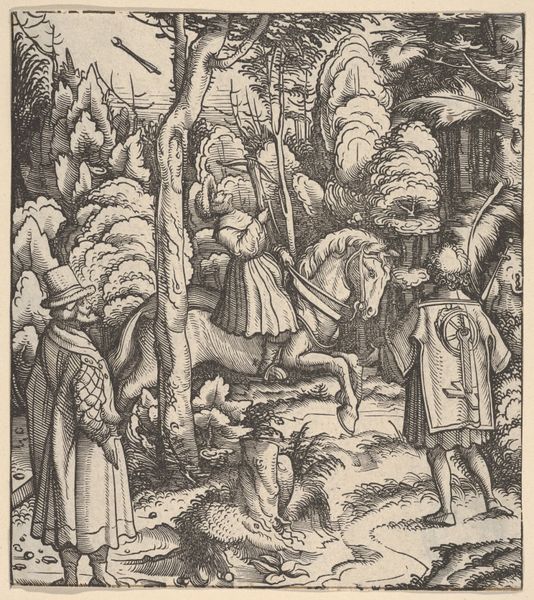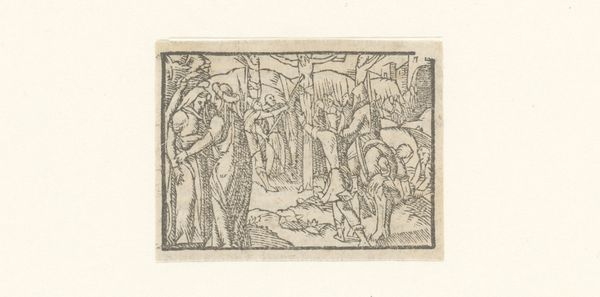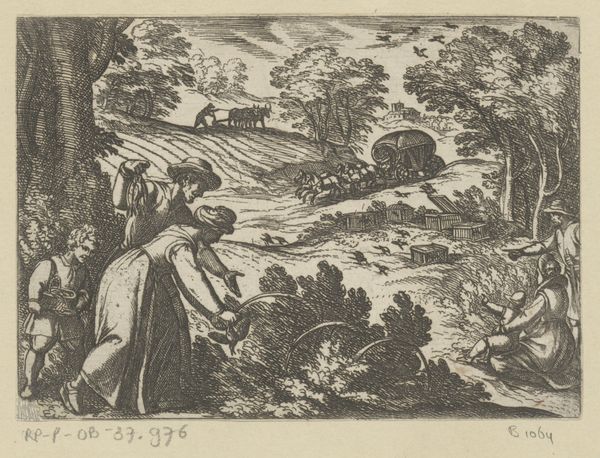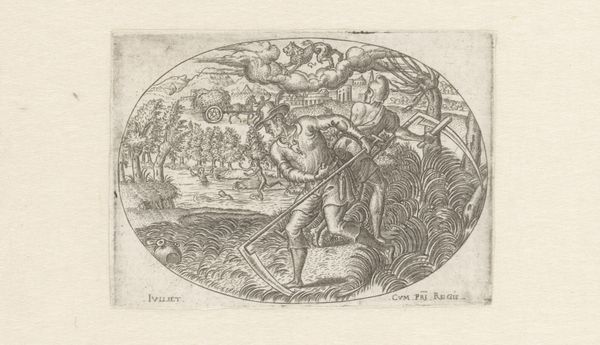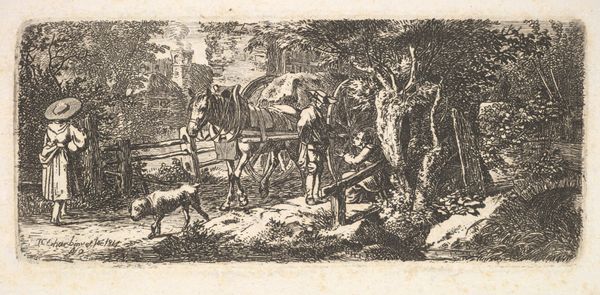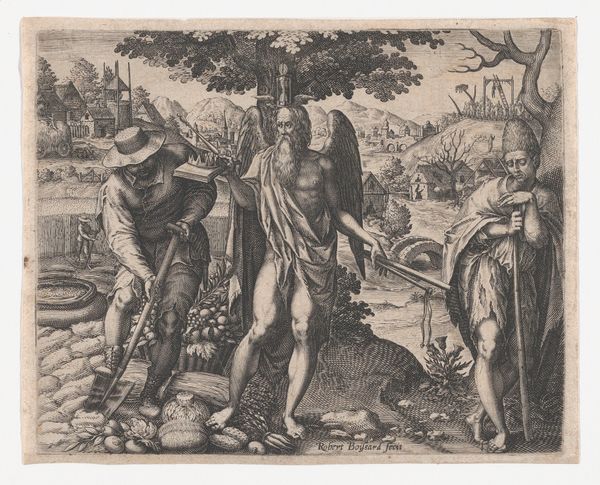
drawing, print, etching, engraving
#
drawing
#
medieval
#
narrative-art
# print
#
pen sketch
#
etching
#
landscape
#
genre-painting
#
engraving
Dimensions: 1 3/16 × 6 3/16 in. (3.02 × 15.72 cm) (sheet)
Copyright: Public Domain
Editor: We’re looking at Virgil Solis’s “Stag and Hare Hunt,” created sometime between 1530 and 1562. It's an engraving currently held at the Minneapolis Institute of Art. The frantic energy of the hunting dogs is really something. What do you see in this piece from a formalist perspective? Curator: The immediate point of entry resides within the interplay of line and space. Solis’s use of tightly packed, cross-hatched lines creates a dense texture, effectively rendering the frenzy you mention. Notice how the linear structure dictates movement; the eye is propelled across the horizontal plane, mimicking the hunt itself. What structural elements support this sense of kinetic energy? Editor: I guess the repetition of the dogs’ leaping forms, mirroring each other from left to right. The stark contrast between the light, open spaces of the animals’ bodies and the dark, dense background also emphasizes their movement? Curator: Precisely. Furthermore, consider the composition’s symmetry, how it affects the overall reading. The central human figures offer a moment of stasis, dividing the chaotic hunts on either side. Do you see any intentional visual cues used to direct our attention? Editor: The artist uses the figures, framing either side as a way to pull you in almost? They feel as if the composition hinges on this symmetry you mention. So you’re suggesting Solis wasn’t just depicting a hunt, but also engaging with concepts of balance and dynamism through form itself? Curator: Form is paramount. The etching, viewed through the lens of semiotics, reveals the hunt not merely as a scene but as a complex visual statement regarding nature. Hopefully, it becomes clear through visual engagement, as this provides much to think about for contemporary artists and their practice. Editor: It really does, and I didn’t see so many of these layers before. Thank you for revealing them through such insightful observations!
Comments
minneapolisinstituteofart about 2 years ago
⋮
Stags were the quintessential quarry for German hunters during the Renaissance. Craftspeople would have used this hunting frieze—one of nearly 50 in Virgil Solis’s repertoire of patterns—to decorate items like game boards, powder flasks, parade shields, hunting horns, crossbow winders, and, of course, armor.
Join the conversation
Join millions of artists and users on Artera today and experience the ultimate creative platform.
